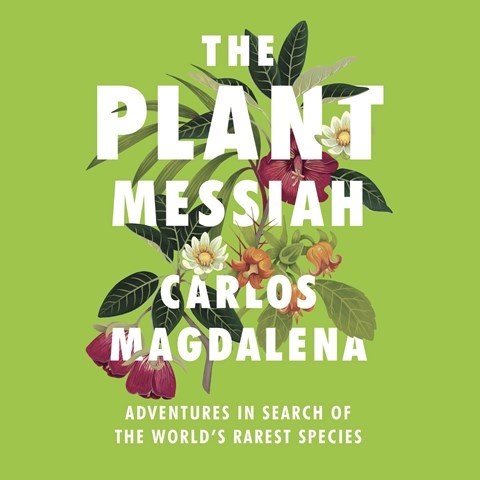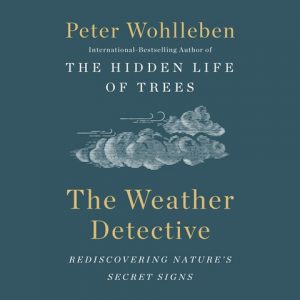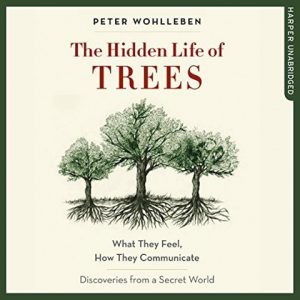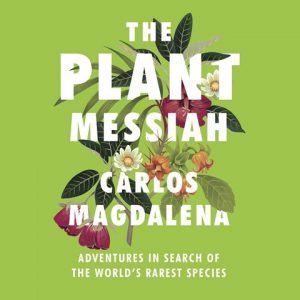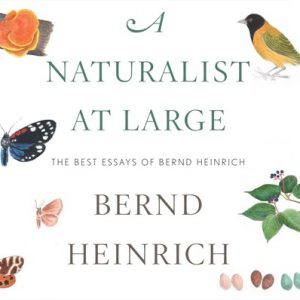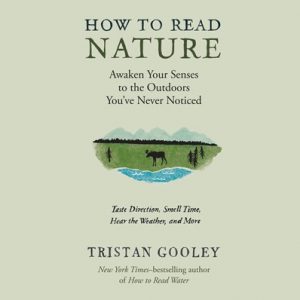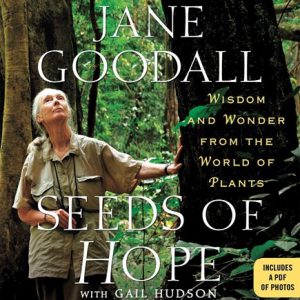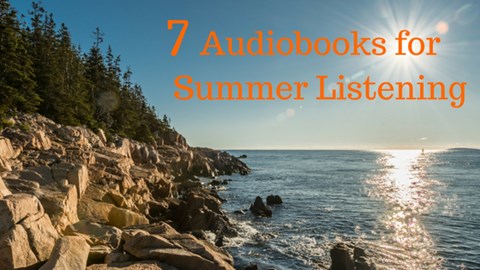It’s around this time of year that I bow to the wisdom of A.A. Milne, who wrote, “Weeds are flowers too, once you get to know them.” After a summer of failing to orchestrate the plants in my care, I long simply to stand back and be thrilled by the messy exuberance of it all. To be as delighted by a whirling maple seed as I was at age five.
For those who feel the same, here are six harvest-season audiobooks—beginning with Nicholas Guy Smith’s clear and friendly reading of Peter Wohlleben’s newest nonfiction, THE WEATHER DETECTIVE, which explores the secrets of the garden from the skies above to the soil below. Did you know that daisies close their flowers when wet weather is on the way? Neither did I. (It’s to preserve their pollen for bees.) The author is German, so much of the information is Eurocentric, but I still found myself saying, “Well, huh,” often enough that my husband kept asking, “What now?” Thus, he, too, knows that honeybees only leave the hive when it’s warmer than 54°F. That’s why on crisp sunny mornings, you see cheerful, shambling bumblebees among the flowers.
I also recommend Wohlleben’s hugely popular previous book, THE HIDDEN LIFE OF TREES, which gave me even more reason to come out as a tree-hugger. Did you know that they talk to each other, using chemicals instead of voices? And they can act as one when threatened? Tolkien’s “ent” tree-army is sort of almost true! Anyway, Mike Grady reads at just the right pace and with obvious interest, making this the perfect listen for a stroll in an autumn-colored forest.
A drive last year through the beetle-ravaged dead forests of America’s Rocky Mountain west convinced me that if I’m sincere about my arboreal passion, I must do more than be a tree-hugger. And according to Carlos Magdalena’s THE PLANT MESSIAH, it’s not only trees that are in trouble. Roy McMillan’s impassioned reading channels the intensity of Magdalena’s search for the world’s rare plants to preserve and protect. An official Kew Botanical Gardens “plant hunter”—isn’t that the best job title?—Magdalena scours the earth for precious species, simultaneously educating and entertaining us.
Our reviewer thought that Bernd Heinrich’s essays, A NATURALIST AT LARGE, make perfect spring listening, but having just heard Rick Adamson’s fine performance of Heinrich’s reflections, I say that they also make perfect autumn listening. There’s more on bumblebees, still busy as the dropping temperatures quell honey bees. And red squirrels, who not only hide nuts among our freshly planted daffodil bulbs, but also share our love of maple sap. And for those dreary fall days when even your new red wool sweater won’t lift the lowering skies, I recommend his essay on cohabiting with elephants, which will spirit you right away.
Once the skies clear, head outside with Tristan Gooley’s HOW TO READ NATURE, a short series of essays and sensory exercises designed to get us back in touch with the great outdoors. Qarie Marshall’s simple, easy narration lets Gooley’s encouragement shine. He wants us to stand still and notice. Look up, for example. Are those wispy streaks of cirrus cloud? The next day, do the cirrus clouds look hazy? Rain is on the way. Okay, the rest you’ll have to hear for yourself.
Finally, my hero Jane Goodall’s wonderful SEEDS OF HOPE, a wide-ranging exploration of the power of the natural world. It’s not a brand-new listen, but it’s a great one that I try to hear annually. The excellent Edita Brychta offers a clear, warm narration of most of the book, with Goodall herself reading the introduction and conclusion. That makes for particularly meaningful listening as we dig deep into the marvel of everything from trees and orchids to seed banks and our neighborhood community gardens.


